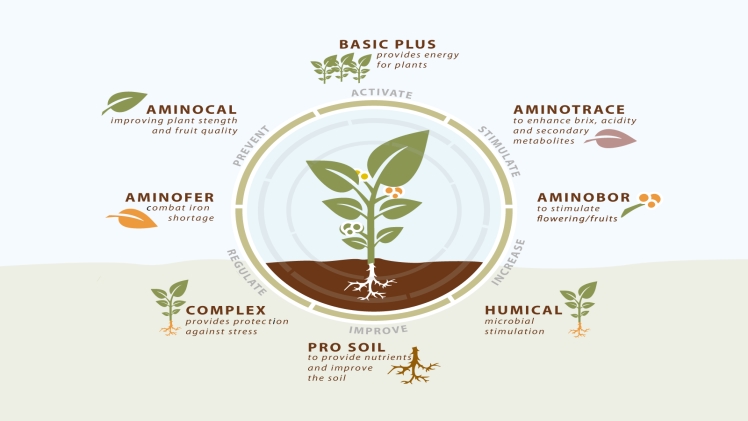Amino corrosive composts are fabricated either by hydrolysis or enzymatic treatment of creature or plant protein feedstock. Amino corrosive composts are promptly retained, shipped, and used as a wellspring of nitrogen and carbon plants. This saves the energy used by the plant to lessen natural matter, engineered nitrates and smelling salts into amino acids. In addition, some amino acids are effective metal particle chelators that can assist with metal particle supplement take-up and help shield plants from poisonous degrees of metal particles.
Amino Acid Fertilizer likewise works as biostimulants for plants. As a biostimulant, amino acids can assume significant parts in upgrading plant efficiency, particularly under abiotic and biotic pressure conditions. These capacities joined with the capacity to be supported for natural use, makes economically delivered amino acids an intelligent decision for cultivators.
How about we look somewhat more profound into biostimulants. Biostimulants are characterized as any substance or microorganism with the intent to improve sustenance proficiency, abiotic stress resilience, as well as harvest quality characteristics (du Jardin, P. 2015. Scientia Hortic. 196:3-14.). It would be best to look for some use case of seaweed extract fertilizer in the soil. There are various equivalent words for biostimulants that date back to the 1950s (see Yakhin et al. 2016. Front. Plant Sci. 7:249).
Today numerous items are depicted as biostimulants for plants. They are fabricated from microbes, growths, green growth, higher plants, creature crude materials, and humate containing materials (Yakhinet al. 2016). du Jardin (2015) records seven fundamental classes of biostimulants.
- Protein hydrolysates and amino acids acquired from synthetic or potentially enzymatic hydrolysis of plant and creature feedstock assume numerous parts in N take-up and absorption, plant flagging, C: N digestion in the plant and can increment microbial biomass, soil breath and soil fruitfulness.
- Humic and fulvic acids are natural acids discovered commonly in soil from the deterioration of plant, creature and microbial buildups. These add to soil ripeness, root nourishment, supplement take-up, and so on. However, they can be variable because of the material from which they are determined.
- Kelp concentrates and botanicals. After you apply amino fertilizer to soils, these items may add to water maintenance and soil air circulation and advance microbial development. When showered on plants, they can go about as a compost, plant development energizer, and help in water pressure the board.
- Inorganic mixtures like silica, selenium, cobalt that advance plant development and resistance to abiotic stress.
- Advantageous microbes have a broad scope of connections from outside to inward plant impacts and can be engaged with nitrogen obsession and plant development advancement and are frequently called probiotics.
- Helpful parasites can work as a plant symbiont, help supplement take-up and mineralization and help with pressure resistance.
Albeit fundamentally filling in as supplements for the plant, explicit amino acids can assume extra parts as a biostimulant. For instance, L-Proline can diminish the impact and accelerate recuperation time from abiotic stress by fortifying the cell divider. L-Glycine and L-Glutamic Corrosive are vital parts for chlorophyll creation. L-Glycine and L-Glutamic can chelate metal particle supplements and work with plant take-up and development into cells. L-Tryptophan is a forerunner in auxin blend, which is utilized for root development and advancement. L-Methionine is a forerunner to ethylene which invigorates ageing, and L-Arginine is a forerunner to cytokinin creation engaged with cell development, axillary bud development and leaf senescence. Fertilization and natural product development require undeniable degrees of different amino acids. L-Histidine assists with ageing; L-Proline builds dust fruitfulness; L-Lysine, L-Methionine and L-Glutamic Corrosive increment germination; L-Alanine, L-Valine, and L-Leucine improve natural product/grain quality. For more data, allude to the references in the accompanying table.

